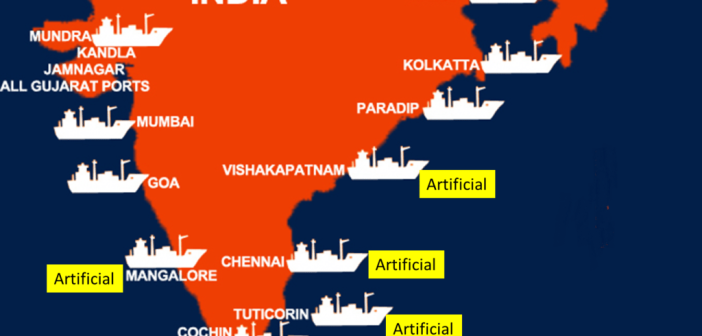The Indian government is aggressively expanding its inland waterways network to reduce the country’s heavy reliance on road and rail freight, which currently dominate the logistics sector. While roads carry 71% of India’s freight and railways account for 18%, inland water transport (IWT) lags at just 2%. To shift this balance, the Ministry of Ports, Shipping, and Waterways has launched a series of infrastructure projects, policy incentives, and intermodal connectivity initiatives aimed at making waterways a viable and cost-effective alternative.
A key focus is the development of Multi-Modal Terminals (MMTs) and Intermodal Terminals (IMTs) along National Waterway-1 (NW-1), the Ganga River. The newly completed Kalughat IMT in Bihar is poised to become a critical hub for cargo bound for Nepal, particularly containerized goods. Traffic projections suggest the terminal could handle 5.38 million metric tons (MMT) by 2045, with over 90% being containers. However, due to space constraints, the facility will initially cap capacity at 77,000 twenty-foot equivalent units (TEUs) annually.
To support this growth, the Inland Waterways Authority of India (IWAI) has built extensive infrastructure at Kalughat, including storage areas, administrative buildings, security offices, and weighbridges. The terminal’s strategic location north of the Ganges eliminates the need for trucks to cross bridges, streamlining the movement of goods to Nepal’s Kathmandu Valley.
Freight traffic on Bihar’s waterways has already shown promising growth. NW-1 handled 12.8 million metric tons in 2023-24, while NW-94, a newer waterway, contributed an additional 1.16 million metric tons. To sustain this momentum, the government is rolling out financial incentives, including a 35% subsidy for cargo owners using IWT and a tonnage tax scheme for inland vessels. The latter, introduced in the 2025 budget, taxes ships based on size rather than profits, offering predictable costs and boosting competitiveness.
Private sector participation is also being encouraged through the National Waterways (Construction of Jetties/Terminals) Regulations 2025, which provides a clear framework for private investment in terminals and jetties. Additionally, major ports like Kolkata’s Shyama Prasad Mookherjee Port are being integrated with inland waterways to enhance multi-modal connectivity.
Digital transformation is another priority. A centralized portal for vessel and crew registration, similar to systems for road transport, is under development to improve transparency and planning. Meanwhile, cargo aggregation hubs like the Freight Village in Varanasi and the Integrated Cluster-cum-Logistics Park in Sahibganj aim to address the lack of industries along waterways, a major hurdle for freight movement.
The government is also pushing public sector units (PSUs) to shift cargo to waterways. Over 140 PSUs across sectors like petroleum, steel, and coal have been asked to earmark a portion of their freight for IWT. Infrastructure upgrades include fairway maintenance, new jetties, and terminals on NW-2 (Brahmaputra), NW-3 (Kerala’s canals), and smaller waterways like NW-68 (Mandovi River).
Tourism is another growth area, with 34 waterways identified for cruise operations, 10 of which are already operational. Shore power and extra berthing facilities are being added to attract cruise operators, while new routes like the Indo-Bangladesh Protocol (IBP) routes 5 and 6 are being activated to enhance cross-border trade.
With these measures, India aims to divert 800 million tonne-kilometers of cargo to waterways—a 17% increase from current levels—while cutting logistics costs and easing congestion on roads and rails. The success of these initiatives could redefine freight movement in the country, making waterways a cornerstone of India’s logistics network.





